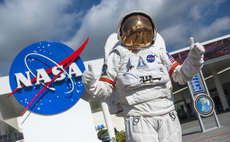Two valves failed to open when they should, and will be studied before the engine is next fired
NASA's Juno probe has developed engine troubles as it orbits Jupiter, leading to a delay in part of its mission. According to a press release from the US space agency, the probe developed an iss...
To continue reading this article...
Join Computing
- Unlimited access to real-time news, analysis and opinion from the technology industry
- Receive important and breaking news in our daily newsletter
- Be the first to hear about our events and awards programmes
- Join live member only interviews with IT leaders at the ‘IT Lounge’; your chance to ask your burning tech questions and have them answered
- Access to the Computing Delta hub providing market intelligence and research
- Receive our members-only newsletter with exclusive opinion pieces from senior IT Leaders





















